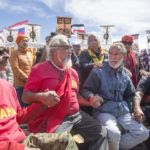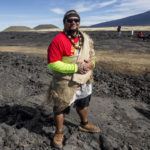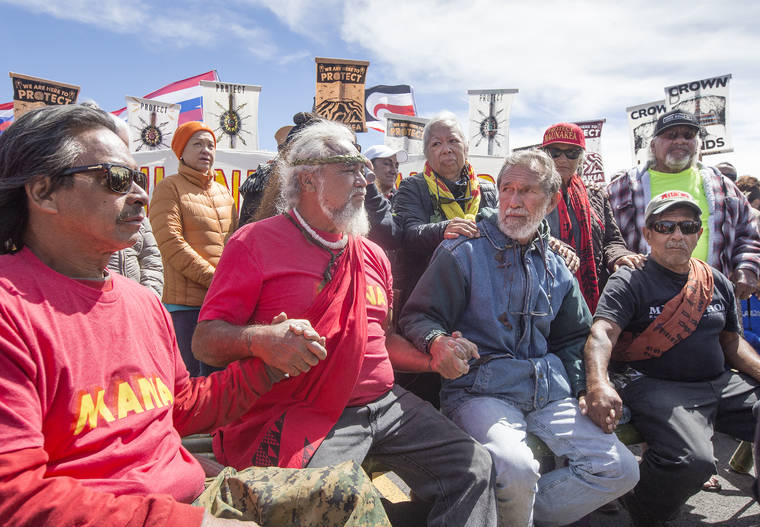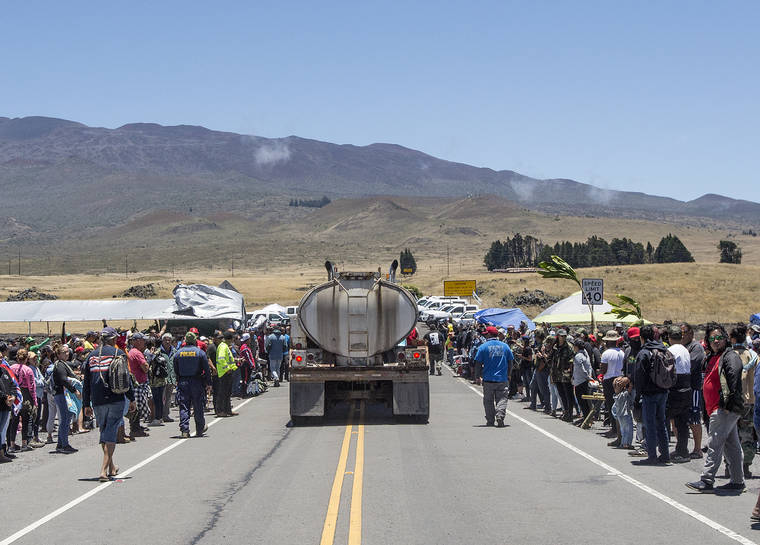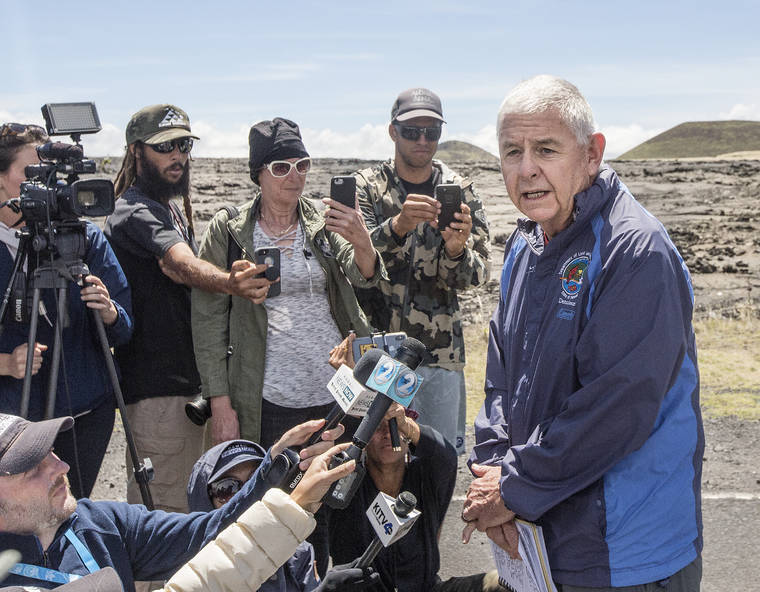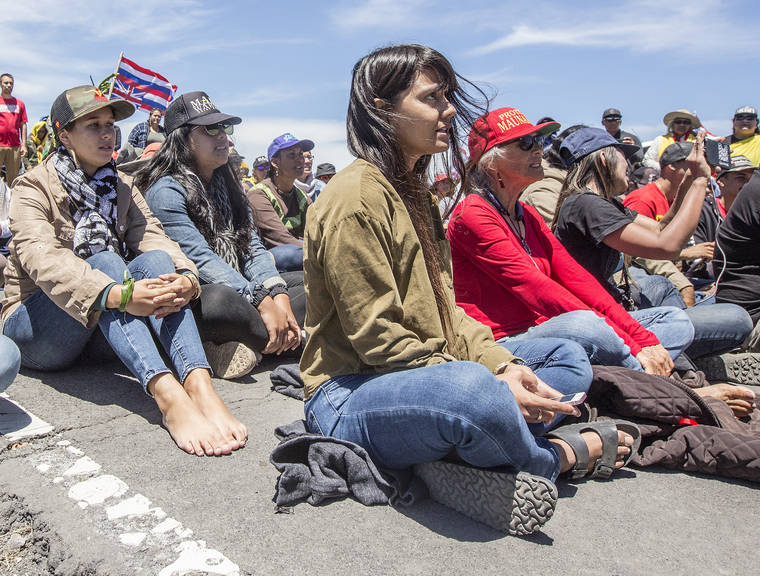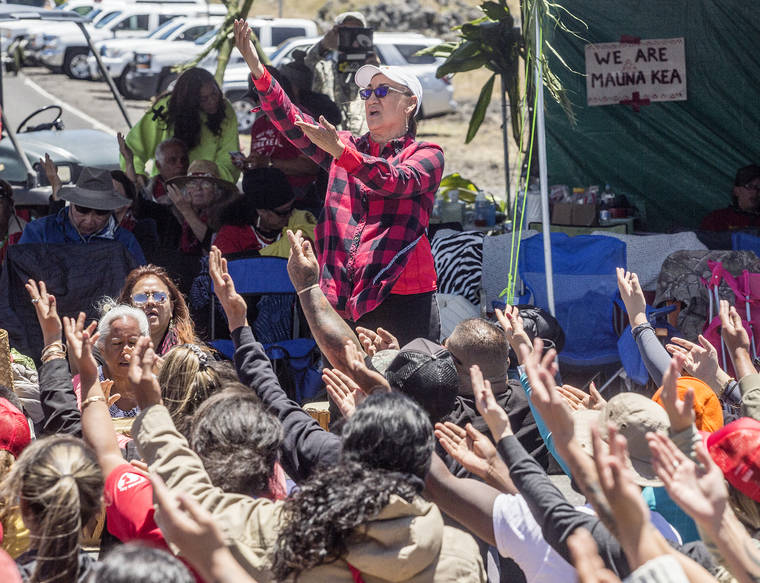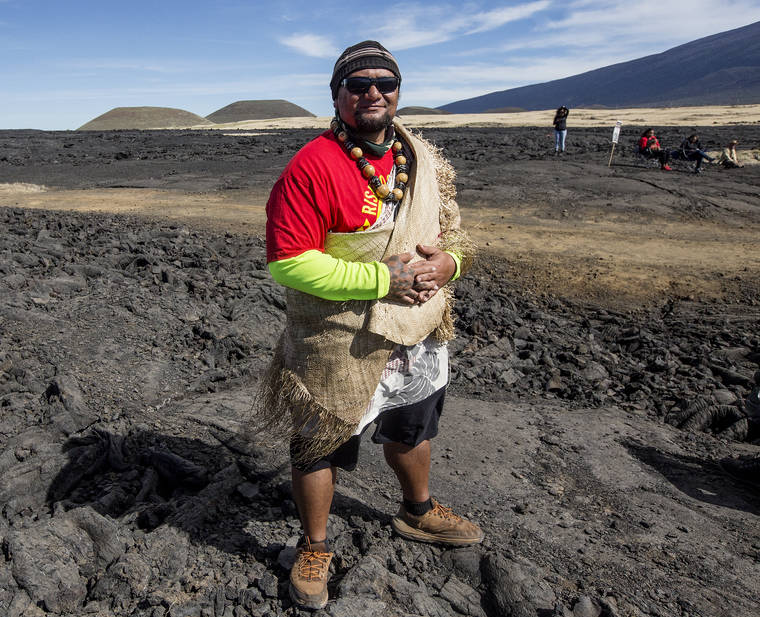Maunakea has been closed to the public entirely as one of the first actions under the emergency proclamation signed by Gov. David Ige Wednesday.
Dan Dennison, spokesman for the state Department of Land and Natural Resources, on Thursday said the proclamation makes it no longer possible for members of the public to access the mountain. While it was possible for people to ascend Maunakea Access Road on foot earlier this week, Dennison said, that no longer is the case.
“That was then, this is now, because of the emergency proclamation and the additional authority that law enforcement has,” Dennison said. “They can restrict access to anyone and everyone including practitioners.”
Dennison’s statements contradict claims by Thirty Meter Telescope opponents, many of whom have reported that cultural practitioners have attempted to ascend the access road on foot this week, only to be refused access by law enforcement.
The closure of the mountain is the first clear action empowered by Ige’s emergency proclamation, which Ige said gives law enforcement more authority to restrict access around the mountain, where hundreds Hawaiians and others have held a protest since Monday.
While the emergency proclamation includes provisions for further police authority at the access road, hardly any police were visible there Thursday as protesters continued their occupation undisturbed.
After dozens of heavily armed officers withdrew from a tense standoff Wednesday afternoon — because the size of the crowd of protesters was too large, Dennison said — nobody was certain when police would return. Hundreds of protesters remained on scene, ready to spring to the defense of the mountain, which many view as sacred, in case of another police action.
However, by press time, that action never came. There was little sign of any police presence at the access road aside from about a dozen police vehicles further along the road, at a checkpoint established by law enforcement on Monday.
Despite the calm, there was an undercurrent of tension throughout Thursday, with many expecting a return of law enforcement, fueled by uncertainty surrounding Ige’s proclamation.
Protester Kaipuaala Lewis said protest leaders told protesters to remain ready to assemble within two minutes in case of a police approach.
“It’s unfortunate that (the police) had to come out in such a way (Wednesday),” Lewis said. “It was clear it was emotionally difficult for them to do what they did.”
Lewis said she hoped maintaining Kapu Aloha — a practice requiring Hawaiians to only act with compassion and love — would force the police to “do a lot of self-reflection,” but added that she still expected them to return in force.
“Basically, the declaration means they don’t have to ask anymore,” said protester Cody “Koko” Tuivaiti.
Several well-known kupuna — who had been arrested Wednesday and cited with obstruction of a government operation — addressed protesters Thursday morning, speaking about the emergency proclamation and Ige with contempt.
“Our illustrious governor has decided to abuse his power,” said Walter Ritte. “Bringing the National Guard here is an insult to us as Hawaiians.”
Ritte said Ige “might be impeached before (President Trump) is impeached,” adding that if the protesters are swept away here, Hawaiians everywhere must rise up.
Noe Noe Wong-Wilson said protesters were “boiling with rage and hurt” after 33 kupuna and one caregiver were arrested Wednesday, but “there was not a single harsh word said,” thanks to protesters’ adherence to Kapu Aloha.
“Perhaps it’s time for you to come down here yourself,” Wong-Wilson said, addressing Ige.
In the absence of any conflict Thursday, the protesters appeared to relax. Many reclined on camping chairs along the sides of the access road, and others gathered by their vehicles along Daniel K. Inouye Highway.
Kupuna organized lessons for protesters to learn new chants in support of the mountain, and even cleared part of the access road for brief hula lessons. One of the teachers, Vicky Holt Takamine, said her lessons were “hula for the mauna, on the mauna.”
The access road briefly cleared once during the afternoon to allow a tanker truck carrying potable water to ascend to Halepohaku.
Stewart Hunter, general manager of Maunakea Support Services, said that about 20 employees of Research Corporation of the University of Hawaii continue to work at Halepohaku, although access has been spotty since the protests began Monday on the access road.
“The last couple of days, we’ve been allowed to drive our vehicles through along a cinder road,” Hunter said. “It starts just west of the access road, and part of it goes on the Old Saddle Road back in.”
University of Hawaii spokesman Dan Meisenzahl said some law enforcement personnel are also staying at Halepohaku.
He added that it is important to keep Halepohaku operational so it can be utilized by observatory personnel — who were all withdrawn from the mountain Tuesday — and TMT construction workers.
Reporter John Burnett contributed to this story.
Email Michael Brestovansky at mbrestovansky@hawaiitribune-herald.com.
